Art engages more than just minds in Health Sciences
A walking tour of the Health Sciences Tucson and Phoenix campuses provides spaces for reflection, bridging the senses and opening the mind.
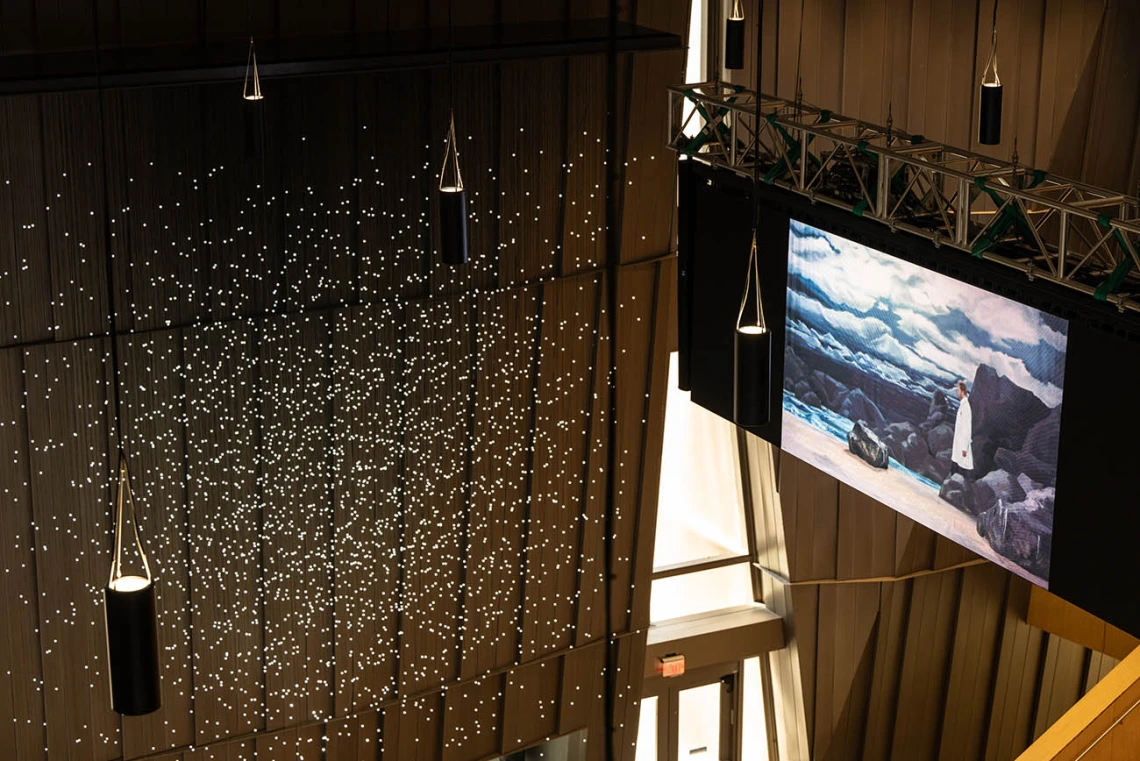
The Forum in the Health Sciences Innovation Building in Tucson is a good place to start your art walk but don’t forget to check out the surrounding buildings as well as the Phoenix Bioscience Core for more.
Art is an essential part of the human experience, adding joy and beauty to life. In the health care world, it can help nursing, pharmacy, public health and medical students develop empathy, sensitivity, compassion and be more in sync with the world around them.
There’s no better place to bring that connection between humanities and health care together than a stroll through the University of Arizona Health Sciences campus where you can create your own personal art walk featuring digital, sculptural, photographic and painted pieces.
Health Sciences Innovation Building
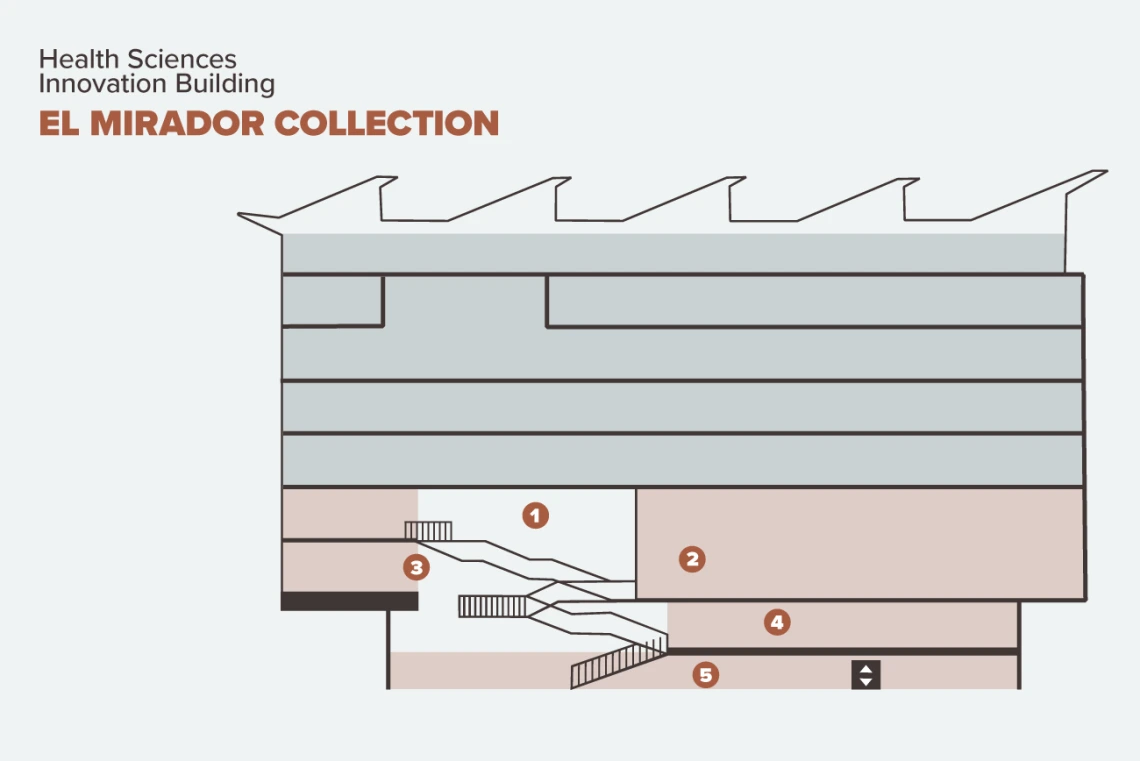
El Mirador art can be found on the first, second and third floors of the Health Sciences Innovation Building.
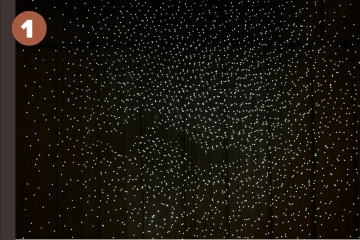
“Untangled Shadows “by Jim Campbell
Start your tour at the Health Sciences Innovation Building, with El Mirador Project, a visionary public art program brought to life by Michael D. Dake, MD, senior vice president for the University of Arizona Health Sciences.
“We wanted to bring the transformative power of art directly to our learning spaces, making the Health Sciences Innovation Building the university’s home for video art and science through the El Mirador Project,” Dake said. “We have pieces by Ragnar Kjartansson, Jennifer Steinkamp, teamLab, Bill Viola and now our first commissioned piece – Untangled Shadows, the newest creation of renowned artist Jim Campbell.”
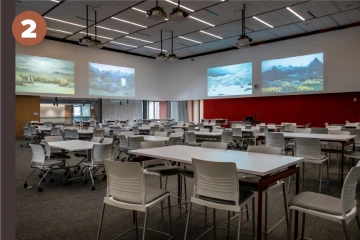
“Figures in Landscape” by Ragnar Kjartansson
Created specifically for the soaring open space of the HSIB Forum, Campbell’s “Untangled Shadows” is a 21-by-21-foot LED light sculpture made of 3,000 pixels that flash to create the abstract but identifiable images of flying birds or swimmers. The display will change every three months.
Also suspended from the Forum ceiling is Kjartansson’s “Figures in Landscape.” The video installation includes seven distinct scenes for each day of the week. On any given day, you’ll see only that specific day’s scene in the Forum. For example, every Wednesday, white-coated figures hang out on a rocky beach. The other six days are displayed in Room 306 on the third floor and open to the public as long as no classes or events are scheduled in that space.
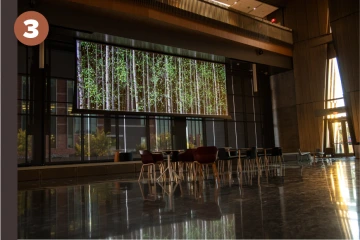
“Blind Eye 3” by Jennifer Steinkamp
From 3:30-5 p.m. weekdays “Figures in Landscape” makes way for “Blind Eye 3,” which features a thick forest of birch trees. It’s Steinkamp’s nod to Gustav Klimt and Vincent van Gogh. The title refers to what it’s like to gaze with one eye closed and the resulting optical echoes left behind when leaves fall.
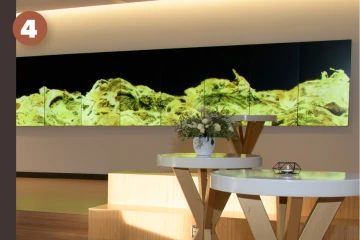
“Gold Waves” by teamLab
On the second floor above the open Forum is “Gold Waves,” a constant, undulating ocean of yellow with no fixed focal point by teamLab, a Japan-based art studio that pulls together artists, programmers, engineers, animators, mathematicians, architects and graphic designers. “Gold Waves” is meant to evoke continuity – of time, water and the flow of life.
Near the elevators, Viola’s haunting “Isolde’s Ascension (The Shape of Light in Space After Death)” depicts a barely illuminated woman floating in water. The piece is part of Viola’s “Love/Death: the Tristan Project,” a series inspired by Richard Wagner’s opera, Tristan und Isolde.
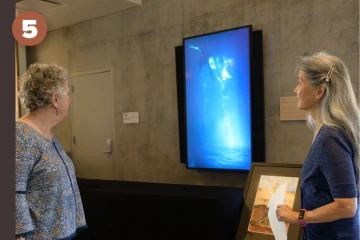
“Isolde’s Ascension (The Shape of Light in Space After Death)” by Bill Viola
“We wanted to bring the transformative power of art directly to our learning spaces, making the Health Sciences Innovation Building the university’s home for video art and science through the El Mirador Project."Michael D. Dake, MD
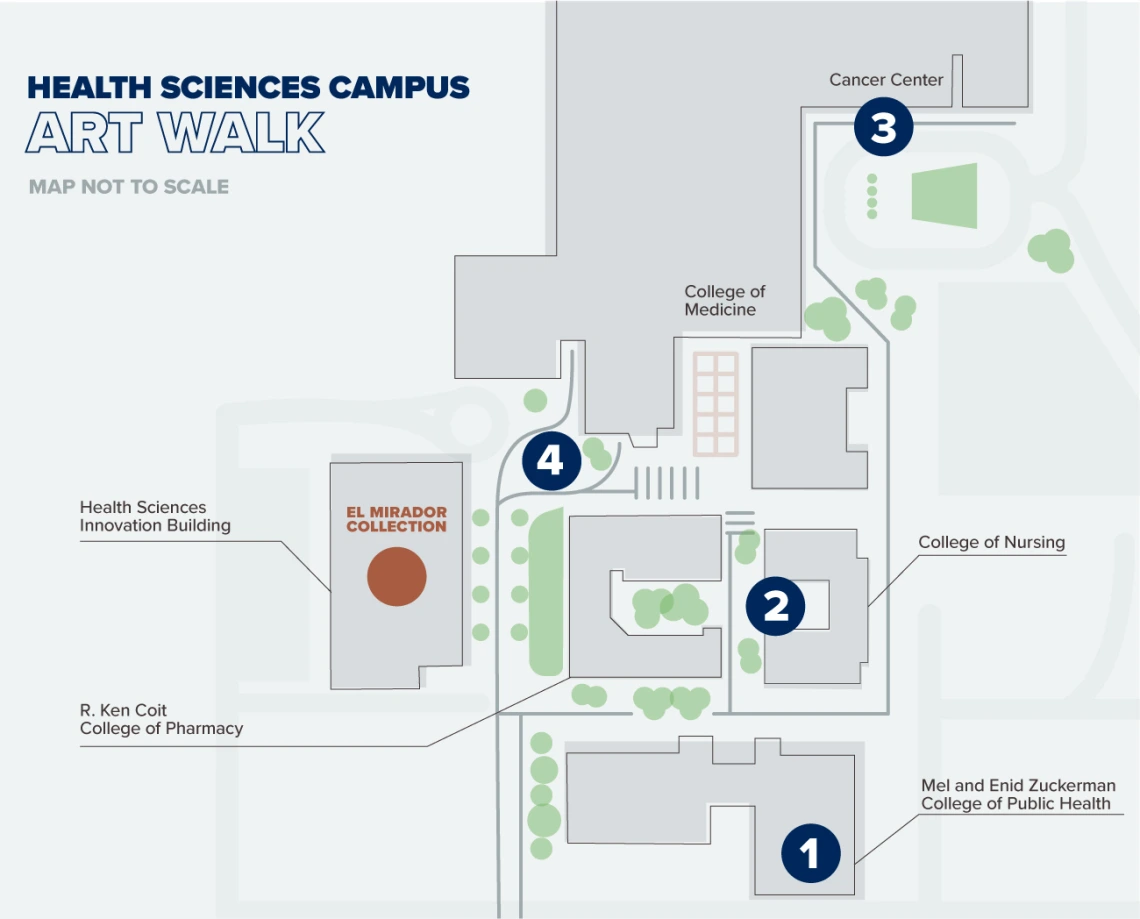
Take a walking tour of the Health Sciences campus and take in the varied art.
Mel and Enid Zuckerman College of Public Health

“An Eye on Public Health” by Amy Zuckerman
Head southeast toward the UArizona Mel and Enid Zuckerman College of Public Health and explore “An Eye on Public Health.” The series of black-and-white photos from Amy Zuckerman, daughter of founding funders Mel and Enid Zuckerman, depicts the human condition from squatter settlements on the Lower East Side of Manhattan, in New York City, to the Mexican border town of Nogales, Sonora, and the African village of Loiyangalani in northern Kenya. A selection of photos can be viewed in the second-floor and third-floor hallway lobby areas of Roy P. Drachman Hall near the elevator.
College of Nursing

“Flute Player” by John H. Waddell
Moving north, just across the walkway at the UArizona College of Nursing, the tranquil courtyard houses “Flute Player,” a cast bronze sculpture by Valley Verde, Arizona, artist John H. Waddell.
Inside the college, “Healer” – a life-size painted pony – graces the first-floor lobby, where it has welcomed visitors for 20 years. Created by Glory Tacheenie-Campoy, the orange horse was part of a local fundraising effort and sports images of stars, ladybugs, butterflies and flowers all meant to represent love, kinship, spirituality and healing. M. Kay Judge, a College of Nursing alum, sponsored Healer to benefit her alma mater.
UArizona Cancer Center
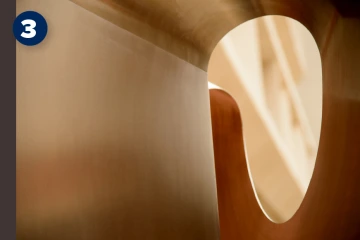
“Solace” by Dennis Jones
Stroll north to the UArizona Cancer Center where you’ll find “Solace.” Artist Dennis Jones, who came to UArizona in 1983 as a School of Art faculty member and director of the 3D studies program and later became director of graduate studies, Interim Dean of the Graduate College, Director of the School of Art and Interim Director of the UA Museum of Art, created the abstract, continuous form made of thin sheet metal that reflects its surroundings.
R. Ken Coit College of Pharmacy

R. Ken Coit bronze sculpture by Bruce Wolfe
Turn back south toward the Coit Museum of Pharmacy & Health Sciences at UArizona R. Ken Coit College of Pharmacy, and you’ll find none other than the father of medicine himself, Hippocrates, in white-marbled splendor in a courtyard. Carved by Kostas N. Georgakis, the sculpture mimics classical technique.
Walking west to the other edge of the courtyard you’ll run into the College of Pharmacy’s namesake. The 9-foot-tall bronze likeness of R. Ken Coit by Bruce Wolfe stands atop a 6-foot marble pedestal and is intended to inspire philanthropy. When the piece was unveiled last year, Coit said he hoped it sparked others to give back.
A Closer Look
Not all El Mirador artwork may be available for viewing during regular building hours, 7 a.m.-7 p.m. Mondays-Fridays.
You need specific Cat Card access to enter the College of Nursing building, but you can still catch a glimpse of Healer through the windows.

